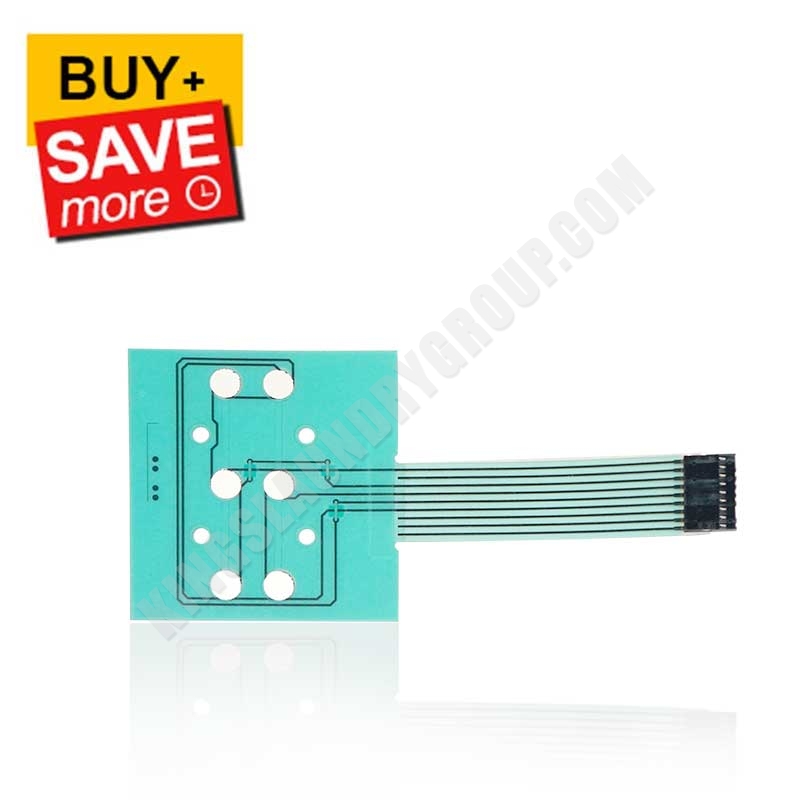Discover How a Membrane Switch Boosts Resilience and Functionality in Devices
How Membrane Layer Changes Add To the Sturdiness of Electronic Control Panels
Membrane buttons play an important duty in enhancing the durability of digital control panels, primarily through their multi-layered construction which offers effective protection versus ecological factors such as moisture and dirt. The lack of relocating parts considerably reduces the chance of mechanical failures, making membrane layer switches over ideal for requiring applications.
Meaning of Membrane Layer Buttons

Membrane layer buttons are made to be slim and light-weight, making them appropriate for applications where area is restricted. They can be manufactured in different forms, sizes, and shades, offering adaptability in design that satisfies aesthetic and useful needs. In addition, membrane switches can integrate various modern technologies, such as responsive feedback and LED indications, boosting user experience.
Due to their building, membrane buttons are typically resistant to dirt, moisture, and basic wear, adding to their toughness sought after environments. Their seamless layout not just promotes easy cleansing yet likewise lessens the danger of mechanical failing, making them a preferred option for producers seeking trustworthy user interfaces in their digital control panels.
Protection Versus Environmental Aspects
The layout of membrane switches naturally provides a degree of security versus various ecological elements, which is vital for maintaining performance in tough conditions - Membrane Switch. These buttons are generally created with layers of flexible materials that shield inner components from moisture, dirt, and impurities. By enveloping the wiring, membrane layer switches reduce the danger of brief circuits and deterioration, which can dramatically harm performance
In addition, the usage of robust adhesives and sealants throughout manufacturing boosts their resistance to ecological challenges. Membrane layer buttons can endure exposure to chemicals and solvents, making them appropriate for industries such as food processing and healthcare, where health and tidiness are vital. Their smooth surface area design additionally avoids the build-up of dirt and microorganisms, facilitating much easier cleansing and upkeep.
Temperature level fluctuations are one more environmental issue, and membrane layer switches are engineered to operate efficiently throughout a large range of temperatures (Membrane Switch). This versatility makes sure that control board continue to be functional in various settings, from industrial environments to customer electronic devices
Effect on Individual Interaction
User communication with digital control panels is dramatically influenced by the design and capability of membrane switches. These switches supply a responsive user interface that boosts the overall customer experience, permitting intuitive navigation and control. Their responsive nature ensures that users get instant comments upon activation, which Read Full Report is important for jobs needing precision and performance.
Furthermore, the smooth surface area of membrane layer changes assists in very easy cleaning and upkeep, promoting customer confidence in the integrity of the interface. This tidiness is especially important in environments where health is vital, such as clinical or food handling settings. Additionally, the small and light-weight design of membrane switches over adds to the aesthetic allure of control board, urging user engagement with a modern and sleek appearance.
In addition, the integration of aesthetic components, such as printed symbols and backlighting, assists users swiftly determine functions, lowering the finding out curve connected with new equipment. Consequently, users can operate gadgets better, resulting in increased productivity and fulfillment. In summary, membrane layer switches play a crucial function in improving user interaction by combining functionality, aesthetics, and ease of use, eventually resulting in improved functional effectiveness.
Style Versatility and Customization
Layout adaptability and modification are vital aspects of membrane layer buttons, enabling suppliers to tailor electronic control board to specific applications and individual demands. This versatility enables the integration of numerous layout elements, such as shades, graphics, and appearances, which can enhance the aesthetic allure and customer involvement of the control panel.
Membrane buttons can be tailored in shapes and size, accommodating a hop over to here variety of devices and applications, from commercial machinery to customer electronic devices. This flexibility makes sure that makers can produce instinctive user interfaces that line up with individual assumptions and functional demands. In addition, the capacity to integrate unique attributes such as backlighting or tactile feedback further enhances usability, permitting an extra interactive experience.
In addition, the production procedure for membrane layer changes sustains the fast prototyping of styles, making it possible for suppliers to repeat and fine-tune their principles promptly. This capacity not only accelerates the advancement timeline however likewise guarantees that the end product meets particular useful and visual standards.

Cost-Effectiveness and Durability
Cost-effectiveness and durability are significant benefits of membrane layer buttons, making them an attractive choice for manufacturers and end-users alike. These switches are typically less costly to generate than typical mechanical switches, mainly because of their streamlined manufacturing processes and the lowered variety of blog elements called for. This expense advantage expands not just to first manufacturing but also to lasting operational expenditures, as membrane layer switches typically need much less upkeep and have a lower failure price.
Moreover, the long life of membrane layer switches contributes to their total value. Built from durable materials, they are immune to ecological variables such as wetness, dust, and chemicals, which can result in premature wear in various other button types. The lack of relocating components lessens mechanical failure, allowing membrane changes to keep performance over expanded durations.
This sturdiness is particularly advantageous in applications calling for constant efficiency under requiring conditions, such as clinical devices and industrial tools. Inevitably, the mix of cost-effectiveness and durability makes membrane switches over a financially viable choice for producers, offering trustworthy remedies that withstand the test of time while maximizing monetary factors to consider.
Conclusion
In conclusion, membrane switches significantly boost the toughness of digital control panels with their durable building and construction and protective features - Membrane Switch. Generally, membrane layer changes stand for a reputable and cost-efficient selection for improving the longevity and capability of electronic control systems.